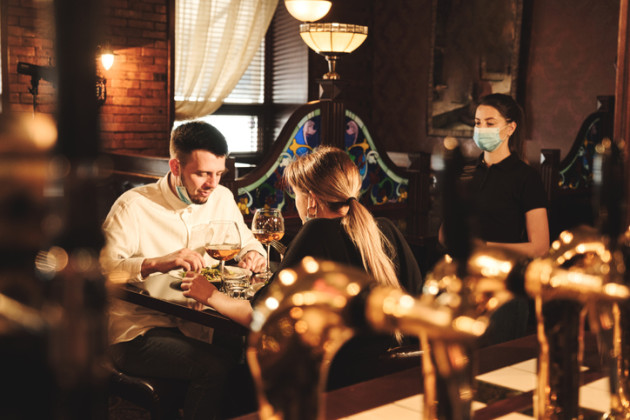
Pubs lead uneven on-trade reopening
The on-trade still has a long way to go before it is fully re-opened as Covid-19 lockdown restrictions ease, according to new research.
Only 62% of Britain’s licensed premises were trading again by the end of July – equating to some 71,000 venues out of a potential total of nearly 114,500 – with marked variations across different business models and across the regions.
While food-led pubs have led the recovery, with 87% having reopened, the situation is much less rosy among restaurants, bars and sports and social clubs, where less than 60% are back in business. Among casual dining restaurants, 63% are trading again.
The sector as a whole reopened cautiously, with only 41% active a week after the restrictions were lifted on 4 July, the report, from research agency CGA in association with management consultants Alix Partners, revealed.
Independent businesses have been hardest hit by the pandemic, with only 52% having reopened open. Group-managed sites, with typically larger cash reserves, have found recovery easiest, with 75% trading again. The figure is even higher among leased and tenanted premises, at 85%.
In terms of regional variations, London is lagging behind the other English regions, with only 61% of venues having reopened. The capital’s pace of recovery has been hampered by the slow return of office work and the collapse in tourism.
The South and South East has recovered most quickly, with around three-quarters of venues back in business, perhaps driven in part by the rise of homeworking.
Elsewhere, the North East and South West are at 73%, with other regions not far behind. The South West was the slowest region to come out of lockdown, with only around 30% of venues open by 18 July.
In Scotland and Wales, which have exited lockdown more cautiously than England, the picture is different, with 59% and 34% of venues respectively having re-opened their doors.
Karl Chessell, business unit director for Food and Retail at CGA, said: “This new data makes it clear that hospitality’s road to recovery will be long.
“It is encouraging to see so many pubs back up and running soon after the end of lockdown, but that is in sharp contrast to the casual dining restaurant sector – especially in city centres, where footfall remains well below pre-Covid levels as shoppers, diners and drinkers opt to stay closer to home.
“However, much will now depend on consumer confidence and pandemic restrictions. The number-one challenge for businesses is to respond to people’s concerns and demonstrate that they can have a safe and enjoyable experience when they go out to eat and drink.
“If they can achieve that, we can expect to see site and trading numbers increase over the summer and autumn.”
Graeme Smith, managing director of AlixPartners, said: “These figures demonstrate that the shape of the recovery and site reopenings is not straightforward and dictated by many factors.
“While pubs are leading the charge, casual dining and restaurant operators are taking a much more cautious approach. Headlines over the past few weeks have been dominated by news of some of these businesses permanently shuttering sites or restructuring and our view is more of these processes will emerge in the coming period.
“It will be interesting to see over the next few weeks whether the government’s change of advice in encouraging people back to the office results in greater commuter footfall in large cities, which might encourage operators with sites in those locations to reopen more quickly."
Early indications are that the government's Eat Out to Help Out scheme, which launched at the beginning of August, has proved a welcome boost for the sector.
Keywords:
- CGA
- Restaurants
- pubs
- Business
- trading
- casual dining
- having
- Dining
- south
- venues
- south west
- covid
- recovery
- reopened
- having reopened
- dining restaurants
- re opened
- casual dining restaurants
- “this new data
- business unit director
- karl chessell business
- chessell business unit




